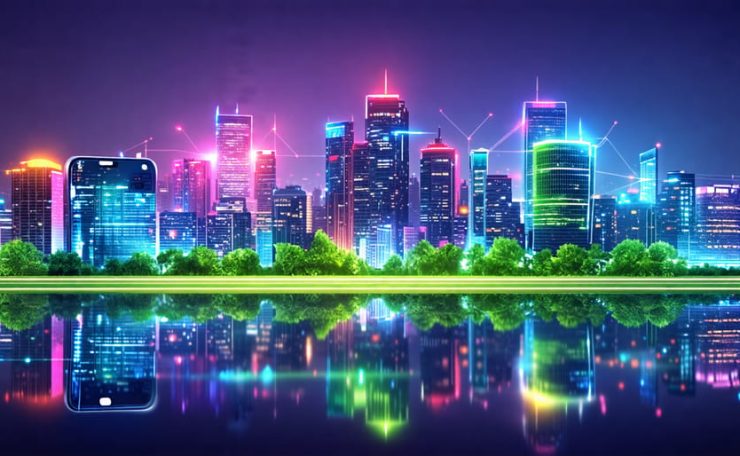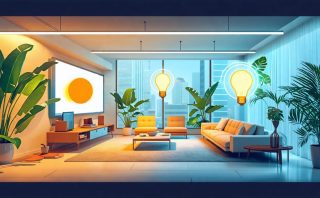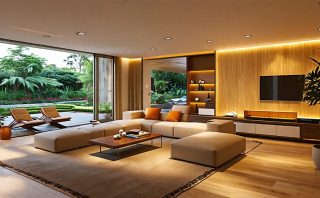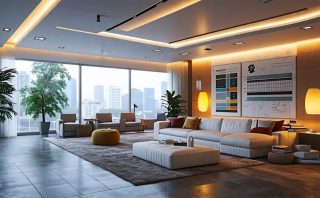The lighting industry is undergoing a rapid transformation, fueled by technological advancements and shifting consumer demands. LED technology has emerged as a game-changer, offering energy efficiency, longevity, and unparalleled design flexibility. Smart lighting systems are revolutionizing how we control and personalize our illuminated spaces, seamlessly integrating with our connected lives. Sustainability has become a driving force, with eco-friendly materials and energy-saving solutions taking center stage. Moreover, the growing awareness of light’s impact on human health and well-being is shaping the future of lighting design, prioritizing circadian rhythms, glare reduction, and visual comfort. As these forces converge, the lighting industry is poised for a paradigm shift that will redefine how we illuminate our world.
The LED Revolution
Improved Energy Efficiency
The widespread adoption of LED lighting has revolutionized energy efficiency in both homes and businesses. LED bulbs consume up to 90% less energy than traditional incandescent bulbs, resulting in significant cost savings on electricity bills. This drastic reduction in energy consumption also contributes to a smaller carbon footprint, making LEDs an eco-friendly choice. In residential settings, homeowners can enjoy brighter, longer-lasting light while reducing their energy costs. Commercial businesses, such as offices, retail stores, and restaurants, can benefit from the LED lighting revolution by not only saving on energy expenses but also by creating a more inviting and productive atmosphere for employees and customers alike. The extended lifespan of LED bulbs, which can last up to 50,000 hours, means less frequent replacements and maintenance, further enhancing their cost-effectiveness. As more people become aware of the benefits of LED lighting, the demand for these energy-efficient solutions continues to grow, driving innovation and making them an increasingly accessible option for everyone.
Enhanced Design Flexibility
LED lighting technology has revolutionized the way we approach lighting design, offering unparalleled flexibility and creative control. With their compact size, directional light output, and wide range of color options, LEDs empower designers to craft truly unique and immersive lighting experiences. From subtle accent lighting to bold, dynamic displays, LEDs can be easily integrated into any architectural or interior design concept. Their versatility allows for the creation of layered lighting schemes that seamlessly blend ambient, task, and accent lighting to achieve the desired ambiance and functionality. Whether illuminating a cozy living room, a chic restaurant, or a grand event space, LEDs provide endless possibilities for customization. By carefully selecting color temperatures, intensities, and beam angles, designers can highlight key features, create visual depth, and evoke specific moods or emotions. The adaptability of LEDs also extends to their controllability, enabling users to easily adjust lighting scenes to suit different activities or occasions. With the power of LEDs, lighting design is no longer limited by traditional constraints, opening up a world of artistic expression and innovation.
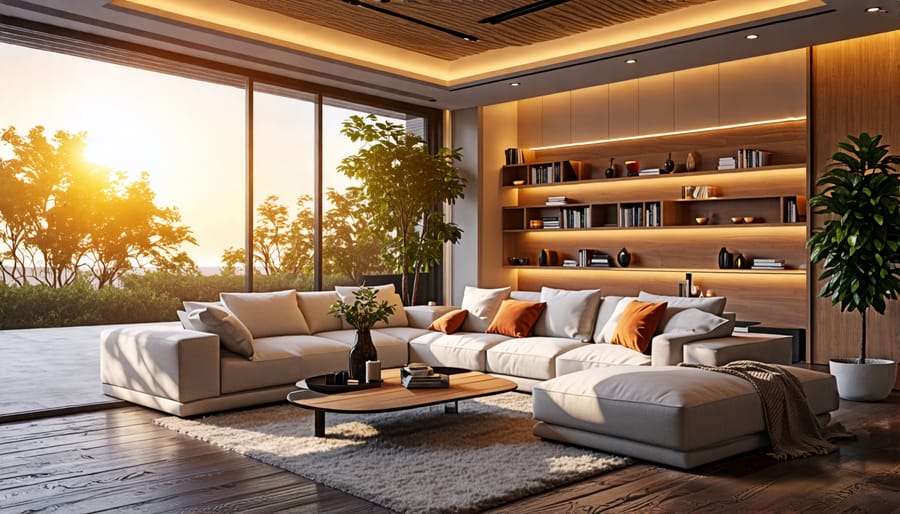
Smart Lighting Technology
The lighting industry has undergone a significant transformation with the advent of smart lighting technology. Smart lighting systems offer a new level of control, customization, and convenience, revolutionizing the way we illuminate our homes and businesses. These innovative systems allow users to automate their lighting, set schedules, and create personalized ambiances with just a few taps on their smartphone or voice commands.
One of the key benefits of smart lighting is energy efficiency. By enabling users to control their lights remotely, set timers, and adjust brightness levels, smart lighting systems can significantly reduce energy consumption and lower electricity bills. Additionally, many smart bulbs use energy-efficient LED technology, further enhancing their eco-friendliness.
Smart lighting also offers unparalleled flexibility and customization options. Users can choose from a wide range of colors and shades to create the perfect atmosphere for any occasion, whether it’s a cozy evening at home, a productive work session, or a lively party. Some smart lighting systems even allow for the creation of custom scenes, where multiple lights can be controlled simultaneously to achieve a desired ambiance.
Integration with other smart home devices is another significant advantage of smart lighting technology. Many systems can seamlessly connect with smart thermostats, security cameras, and voice assistants, enabling users to create a fully integrated and automated home experience. For example, you can set your lights to turn on automatically when your smart lock detects that you’ve arrived home or have them dim gradually as your smart thermostat adjusts the temperature for bedtime.
Real-world applications of smart lighting extend beyond the home. In commercial settings, such as offices, retail stores, and hotels, smart lighting can be used to create inviting and dynamic environments that enhance the customer experience. For instance, a store could use smart lighting to highlight specific products or create immersive displays, while a hotel could allow guests to personalize the lighting in their rooms for ultimate comfort.
As smart lighting technology continues to evolve, we can expect to see even more innovative features and applications emerge. From adaptive lighting that adjusts based on natural light levels to advanced energy monitoring and optimization, the possibilities are endless. Embracing smart lighting technology not only provides convenience and customization but also contributes to a more sustainable and efficient future.
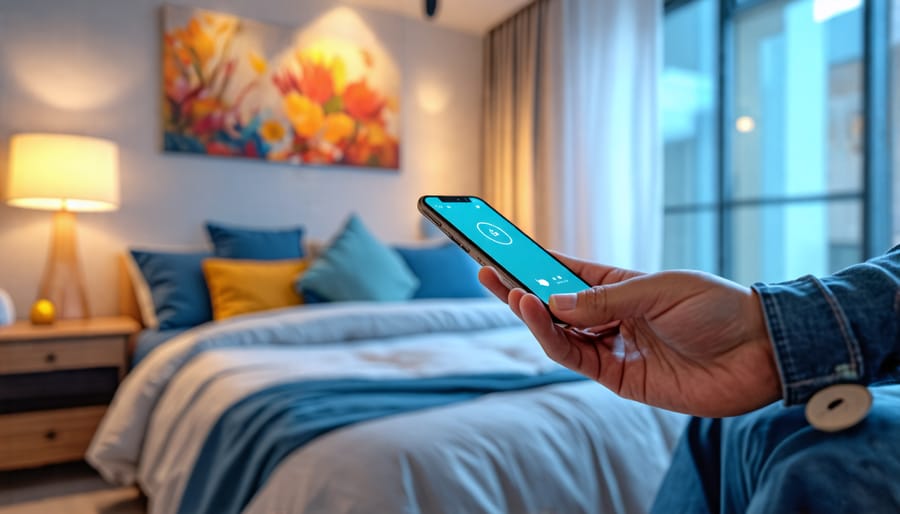
Sustainability and Eco-Conscious Design
In recent years, the lighting industry has seen a significant shift towards sustainability and eco-conscious design. Manufacturers are increasingly prioritizing energy-saving features, recyclable materials, and dark sky compliance in their products. LED technology has been at the forefront of this movement, offering superior energy efficiency compared to traditional lighting options. These eco-friendly lighting solutions not only reduce energy consumption and costs but also contribute to a smaller carbon footprint.
Recyclable materials, such as glass, aluminum, and recyclable plastics, are being incorporated into light fixtures, making them more environmentally friendly at the end of their lifespan. Manufacturers are also focusing on product longevity and modularity, allowing for easy repairs and upgrades rather than complete replacements.
Dark sky compliance is another crucial aspect of eco-conscious lighting design. By minimizing light pollution, these fixtures protect the night sky and reduce the negative impact on wildlife. Many modern outdoor lighting solutions feature shielding and directional control to ensure light is directed only where needed.
As consumers become more environmentally conscious, the demand for sustainable lighting options continues to grow. This shift has encouraged manufacturers to invest in research and development, resulting in a wide range of innovative, eco-friendly products that cater to various applications and design preferences.
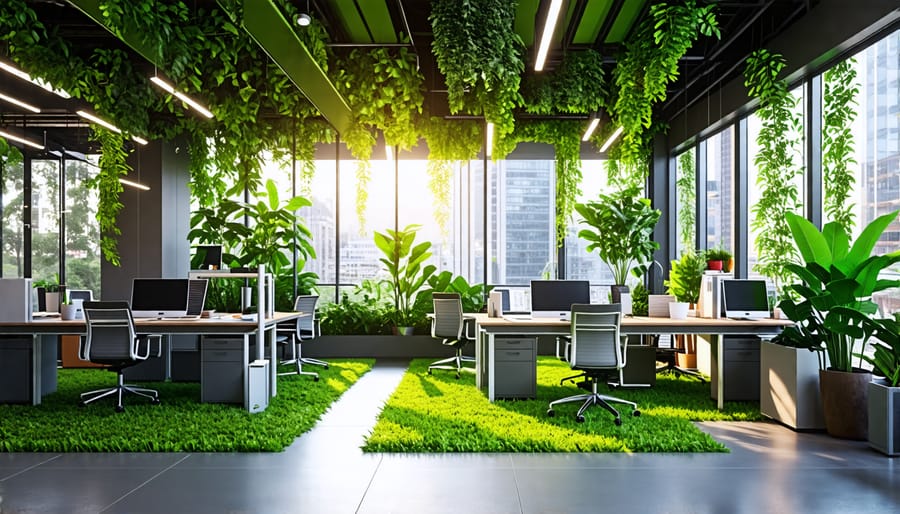
The Role of Lighting in Wellness and Productivity
In recent years, the lighting industry has witnessed a growing emphasis on human-centric lighting design that prioritizes the well-being and productivity of individuals in various settings. This approach goes beyond mere illumination and focuses on creating lighting environments that support circadian rhythms, reduce eye strain, and enhance mood and overall performance. By mimicking the natural progression of daylight, human-centric lighting design helps regulate the body’s internal clock, leading to improved sleep patterns, increased alertness during the day, and better overall health.
In office spaces, human-centric lighting has been shown to boost employee productivity, reduce absenteeism, and improve job satisfaction. By adjusting color temperature and light intensity throughout the day, these systems create a more comfortable and visually appealing work environment that minimizes eye strain and fatigue associated with prolonged screen time. Similarly, in educational settings, human-centric lighting has been linked to enhanced student concentration, faster learning, and better academic performance.
The healthcare industry has also embraced human-centric lighting to promote healing and recovery. In hospitals and long-term care facilities, circadian-friendly lighting can help regulate patients’ sleep-wake cycles, reduce agitation in dementia patients, and improve overall mood and well-being. Retail spaces and hospitality venues are also incorporating human-centric lighting to create inviting atmospheres that encourage longer stays and increased customer engagement.
As the benefits of human-centric lighting become more widely recognized, manufacturers are developing innovative products and control systems that allow for easy customization and adaptation to different environments. From tunable white LEDs to advanced control platforms that automatically adjust light settings based on time of day and occupancy, these solutions are making it easier than ever to create lighting environments that prioritize human health and well-being. As the industry continues to evolve, we can expect to see human-centric lighting become an increasingly important consideration in the design of homes, workplaces, and public spaces.
Conclusion
The lighting design industry is undergoing a rapid transformation, driven by technological advancements, sustainability concerns, and a growing focus on human-centric design. As LED technology continues to improve and become more affordable, it is quickly becoming the standard in both residential and commercial settings. Smart lighting systems are also gaining popularity, offering unprecedented control and customization options. Additionally, the industry is placing a greater emphasis on sustainable practices and the use of eco-friendly materials.
These changes present exciting opportunities for homeowners, designers, and businesses alike. By staying informed about the latest trends and innovations, they can create lighting solutions that are more efficient, adaptable, and beneficial to human health and well-being. However, navigating this evolving landscape can be challenging without the right expertise.
Working with knowledgeable professionals, such as lighting designers and consultants, is crucial to harnessing the full potential of these advancements. They can provide valuable guidance on selecting the best products, designing optimal layouts, and integrating lighting with other systems. By staying at the forefront of the industry and collaborating with experts, anyone can create stunning, functional, and sustainable lighting environments that enhance the beauty and value of their spaces.

